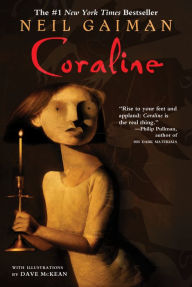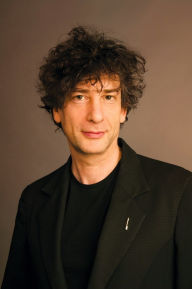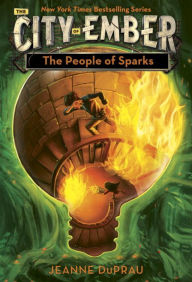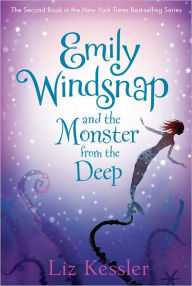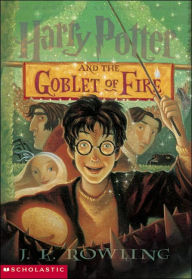This edition of New York Times bestselling and Newbery Medal-winning author Neil Gaiman’s modern classic, Coraline—also an Academy Award-nominated film—is enriched with a foreword from the author, a reader's guide, and more.
When Coraline steps through a door to find another house strangely similar to her own (only better), things seem marvelous.
But there's another mother there, and another father, and they want her to stay and be their little girl. They want to change her and never let her go.
Coraline will have to fight with all her wit and courage if she is to save herself and return to her ordinary life.
Family Fun Magazine
A truly creepy tale. Beware those button eyes!
Christian Science Monitor
Beautifully spooky. Gaiman actually seems to understand the way children think.
Orson Scott Card
A deliciously scary book that we loved reading together as a family.
Times Educational Supplement
Chilly, finely-wrought prose, a truly weird setting and a fable that taps into our most uncomfortable fears.
Globe and Mail (Toronto)
So wonderfully whimsical that readers of all ages will hungrily devour itCoraline is destined to become a classic.
USA Today
Walk through the door and you’ll believe in love, magic, and the power of good over evil.
Terry Pratchett
It has the delicate horror of the finest fairy tales, and it is a masterpiece.
Diana Wynne Jones
The most splendidly original, weird, and frightening book I have read, and yet full of things children will love.
Philip Pullman
Ladies and gentlemen, boys and girls, rise to your feet and applaud: Coraline is the real thing.
Bulletin of the Center for Children’s Books
Gaiman’s pacing is superb, and he steers the tension of the tale with a deft and practiced narrative touch.
New York Times Book Review
A modern ghost story with all the creepy trimmings…Well done.
San Francisco Chronicle Book Review
Coraline is by turns creepy and funny, bittersweet and playful…can be read quickly and enjoyed deeply.
Washington Post Book World
Gaiman’s tale is inventive, scary, thrilling and finally affirmative. Readers young and old will find something to startle them.
Bulletin of the Center for Children's Books
Gaiman's pacing is superb, and he steers the tension of the tale with a deft and practiced narrative touch.
Bulletin of the Center for Children’s Books
Gaiman’s pacing is superb, and he steers the tension of the tale with a deft and practiced narrative touch.
The Bulletin for the Center for Children's Books
“Gaiman’s pacing is superb, and he steers the tension of the tale with a deft and practiced narrative touch.
bn.com
The Barnes & Noble Review
In Neil Gaiman's bestselling adult fantasies, telling the difference between reality and illusion can sometimes mean your soul. With Coraline, the author of American Gods develops this favorite theme for a younger audience, taking us through a deliciously frightening door to an "other," harrowing world.
Coraline's often wondered what's behind the locked door in the drawing room. It reveals only a brick wall when she finally opens it, but when she tries again later, a passageway mysteriously appears. Coraline is surprised to find a flat decorated exactly like her own, but strangely different. And when she finds her "other" parents in this alternate world, they are much more interesting despite their creepy black button eyes. When they make it clear, however, that they want to make her theirs forever, Coraline begins a nightmarish game to rescue her real parents and three children imprisoned in a mirror. With only a bored-through stone and an aloof cat to help, Coraline confronts this harrowing task of escaping these monstrous creatures.
Gaiman has delivered a wonderfully chilling novel, subtle yet intense on many levels. The line between pleasant and horrible is often blurred until what's what becomes suddenly clear, and like Coraline, we resist leaving this strange world until we're hooked. Unnerving drawings also cast a dark shadow over the book's eerie atmosphere, which is only heightened by simple, hair-raising text. Already compared to Alice's Adventures in Wonderland and suited for readers of all ages, Coraline is otherworldly storytelling at its best.
(Matt Warner)
Publishers Weekly
When a girl moves into an old house, she finds a door leading to a world that eerily mimics her own, but with sinister differences. "An electrifyingly creepy tale likely to haunt young readers for many moons," wrote PW in a boxed review. Ages 8-up. (Aug.) Copyright 2003 Reed Business Information.
Educators and parents: Here is a book you will actually want to read alongside your charge! Almost like a Buddhist sutra with its complex themes veiled by more simplistic ones, Coraline does not disappoint. If you are looking for a twist on an old standard—a black cat instead of a rabbit, a couple of washed-up actresses in place of Tweedledee and Tweedledum, and a parade of mice replacing a retinue of other worldy creatures—it is all in this phantasmagoric fantastical horror novel. Coraline is Alice in Wonderland set in the 21st Century. Themes in the book include the power of imagination, the relationship of parents to their children, and a child's emerging sense of self, and how this growing individuality leads to the development of courage and fortitude to face life's difficulties. Because of graphic depictions and startlingly vivid imagery, I would be likely to suggest a middle school and older readership. 2002, HarperCollins Publishers, 176pp.,
— Laura Bullock
Children's Literature
Coraline and her family have moved to a new flat and life continues as normal. Mom and Dad are always busy and she is always bored. When her father offhandedly suggests that she count the doors and windows in their new home to keep her busy, Coraline finds one mysterious door that is locked. Intrigued, Coraline finds the key, opens the door, and finds herself in a very different world. Here, her parents are at the ready to entertain her and keep her happy. This "Other Mother" even cooks everything she likes. At first she thinks this is wonderful, but when she realizes that this Other Mother does not want her to return home, Coraline becomes determined to resist. Coraline makes one trip back home only to find that her real parents have disappeared. Knowing that the Other Mother is behind all this, Coraline returns to find out what has become of her real parents. With the help of a black cat, Coraline manages not only to resist the Other Mother but finds other children who have fallen under her spell. Ultimately, Coraline frees the children and makes sure that the Other Mother can harm no one else. Coraline ends up returning home to her real Mom and Dad and appreciates them in a way she never did before. This story provides a good edge-of-your-seat read without being terribly frightening. For those children who like to be scared, Gaiman's novel is a well-written alternative to Goosebumps. 2002, HarperCollins,
— Joan Kindig
School Library Journal
Gr 6-8-When Coraline and her parents move into a new house, she notices a mysterious, closed-off door. It originally went to another part of the house, which her family does not own. Some rather eccentric neighbors call her Caroline and seem not to understand her very well, yet they have information for her that will later prove vital. Bored, she investigates the door, which takes her into an alternate reality. There she meets her "other" mother and father. They are very nice to her, which pleases Coraline but also makes her a little suspicious. Her neighbors are in this other world, and they are the same, yet somehow different. When Coraline gets nervous and returns home, her parents are gone. With the help of a talking cat, she figures out that they are being held prisoner by her other parents, as are the souls of some long-lost children. Coraline's plan to rescue them involves, among other things, making a risky bargain with her other mother whose true nature is beginning to show. The rest of the story is a suspense-filled roller coaster, and the horror is all the more frightening for being slightly understated. A droll humor is present in some of the scenes, and the writing is simple yet laden with foreboding. The story is odd, strange, even slightly bizarre, but kids will hang on every word. Coraline is a character with whom they will surely identify, and they will love being frightened out of their shoes. This is just right for all those requests for a scary book.-Bruce Anne Shook, Mendenhall Middle School, Greensboro, NC Copyright 2002 Cahners Business Information.
Time Magazines Educational Supplement
"Chilly, finely-wrought prose, a truly weird setting and a fable that taps into our most uncomfortable fears."
Globe & Mail (Toronto)
"So wonderfully whimsical that readers of all ages will hungrily devour itCoraline is destined to become a classic.
Read More
